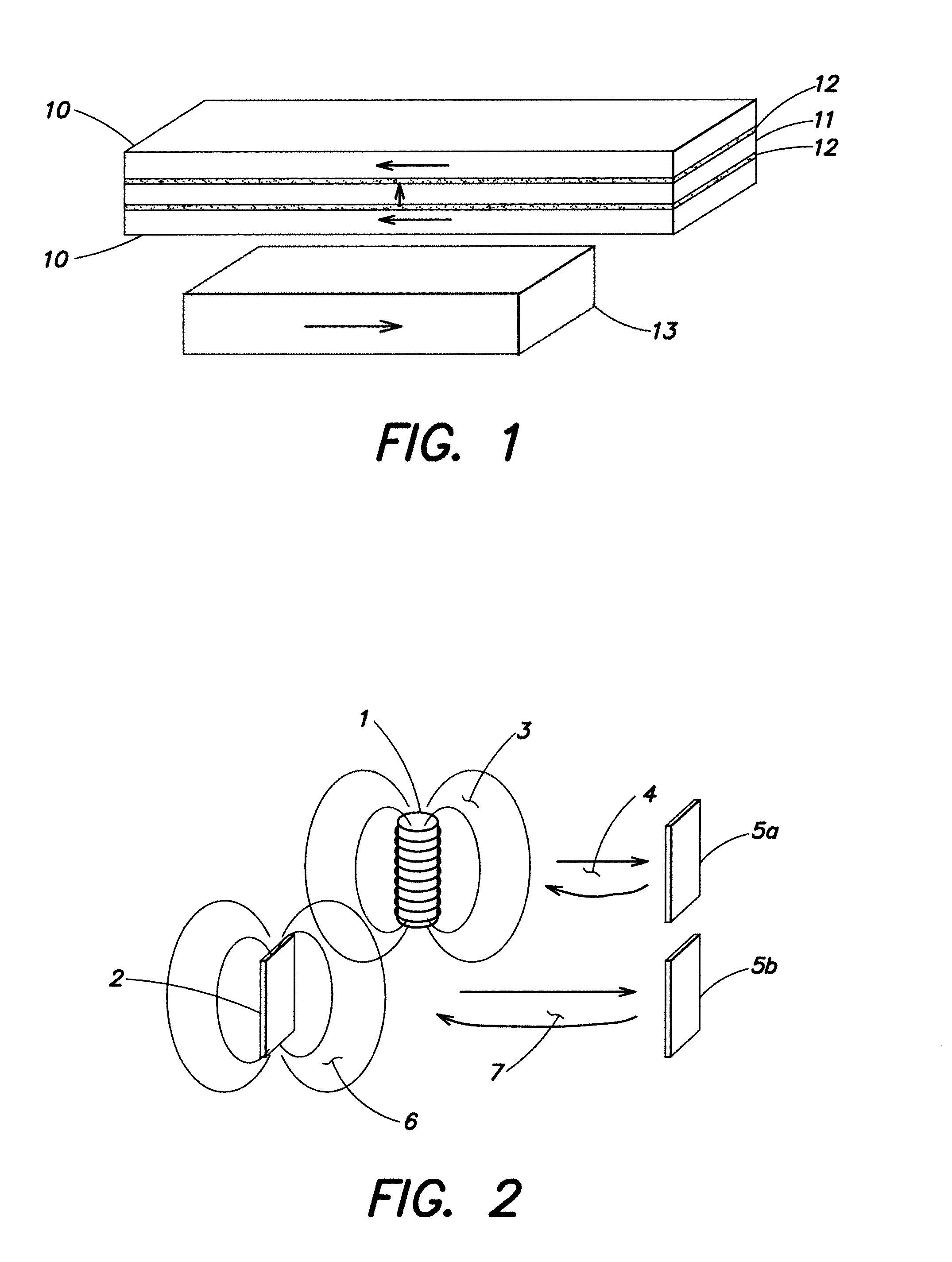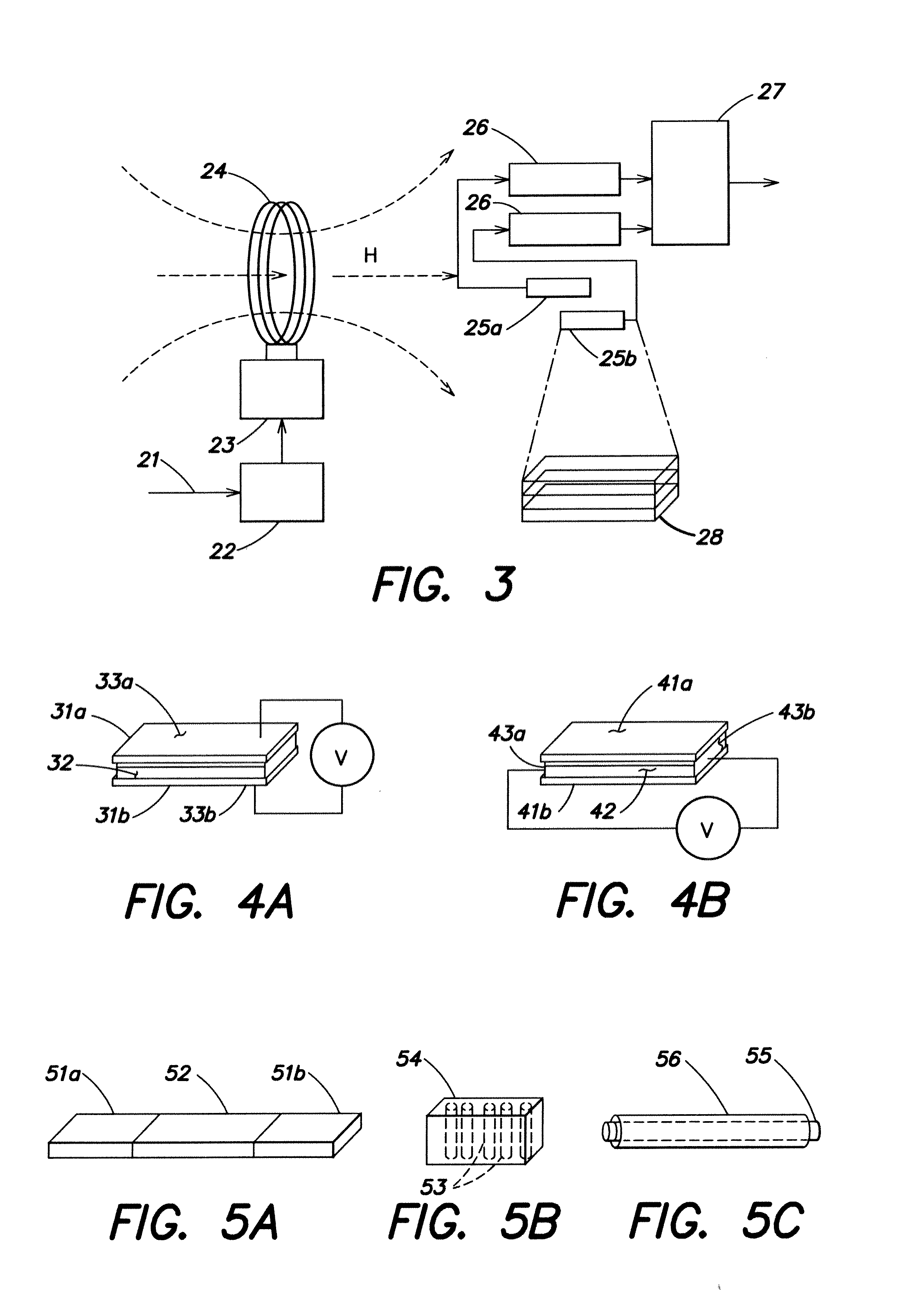Wireless transfer of information using magneto-electric devices
a technology of magnetoelectric devices and wireless communication, applied in the direction of transmission, near-field transmission, electric devices, etc., can solve the problems of difficult detection of inability to communicate information wirelessly over a small distance, and inability to detect such a small magnetic field
- Summary
- Abstract
- Description
- Claims
- Application Information
AI Technical Summary
Benefits of technology
Problems solved by technology
Method used
Image
Examples
Embodiment Construction
[0055]Various embodiments will now be described for the wireless transmission of analog or digital information (e.g., voice or data) and optional power transfer accomplished with a system that includes ME receiver(s) and either coil or ME transmitter(s), plus electronics to power the transmitter and modulation and demodulation circuits to imprint information to the carrier wave and retrieve the information from it. The information may be any signal in analog or digital form and includes but is not limited to text, voice, graphics, video or other data.
[0056]While radio frequency (RF) communication has achieved great success over the past few decades, it still faces challenges in circumstances such as underground communications and or reception through large build structures due to dielectric absorption and metallic shielding. Near-field magnetic communication (NFMC), on the other hand, is very well suited for those environments. So far NFMC has been achieved through coil-to coil indu...
PUM
 Login to View More
Login to View More Abstract
Description
Claims
Application Information
 Login to View More
Login to View More - R&D
- Intellectual Property
- Life Sciences
- Materials
- Tech Scout
- Unparalleled Data Quality
- Higher Quality Content
- 60% Fewer Hallucinations
Browse by: Latest US Patents, China's latest patents, Technical Efficacy Thesaurus, Application Domain, Technology Topic, Popular Technical Reports.
© 2025 PatSnap. All rights reserved.Legal|Privacy policy|Modern Slavery Act Transparency Statement|Sitemap|About US| Contact US: help@patsnap.com



